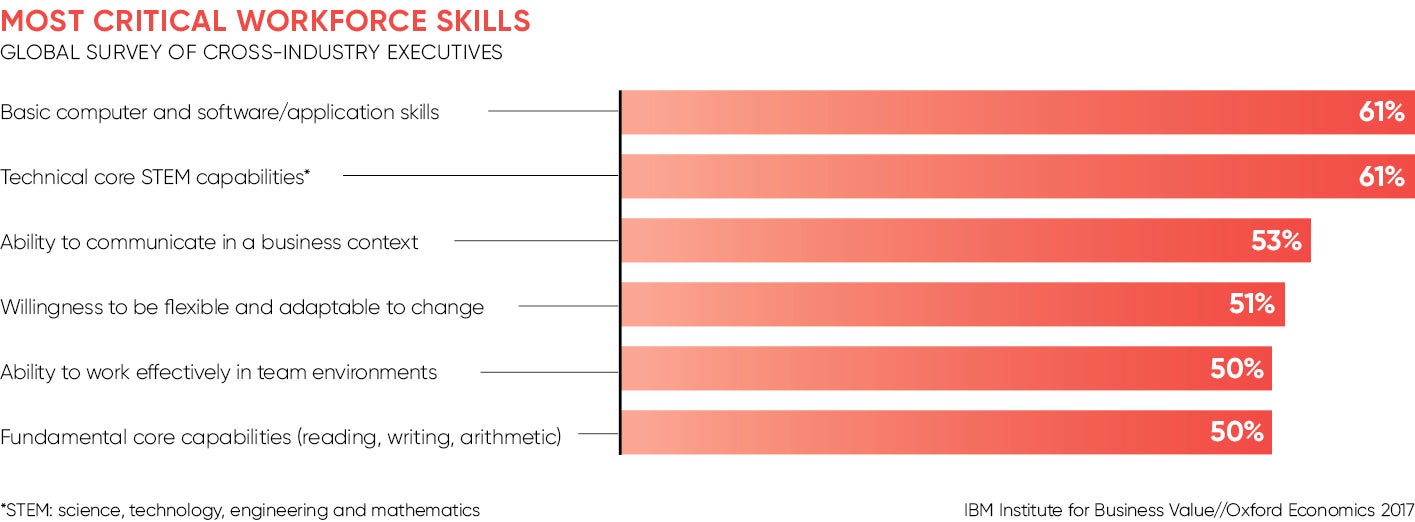It’s strange to think that the future of learning lies with Netflix or Spotify. But those educating the next generation are now taking cues from a lot more sources beyond the classroom, including the media industry. How we consume content is crucial, as is the value of user-generated content and social collaboration. The sector is increasingly trying to reinvent the way we study.
“The challenge we face is that learning is often not built to fit the learners,” says Dr Itiel Dror, a cognitive neuroscientist from University College London. “There is a mismatch between the learning and the learners. Learning must be ‘brain friendly’, so it’s engaging, motivating and effective.”
The sector is being forced to step up its game. Since education operates in a world where millennials now check their phones more than 100 times a day, e-learning solutions must compete aggressively with the likes of Facebook, Twitter, Snapchat and Candy Crush, which are just a distracting tap away.
“The use of technology, by itself, does not enhance learning, it depends on how it’s utilised. That is a great challenge and we are far from using technology to its full potential,” says Dr Dror, a world expert on learning.
The problem lies with most educational systems, globally. Since Victorian times, they’ve been creating mostly dependent learners. Beyond the classroom, students are like fish out of water, gasping for air. They’re reliant on the oxygen of teachers, discipline and schooling to acquire new skills. This isn’t necessarily creating self-starters thirsty for knowledge and masters of their own learning.
“Self-directed strategies are increasingly needed because a dependent-learner strategy cannot keep pace with the latest business developments,” says Vincent Belliveau, executive vice president of Cornerstone OnDemand.
“Unfortunately, most corporate learning strategies have roots in traditional learning approaches. It is critical that new learning departs from these approaches and we increase self-direction for all employees, especially those who are new to the workforce.”
It helps that e-learning solutions geared towards this style of education are now readily available on any device, anytime, anywhere. This enables 24/7 access and flexibility, driving student empowerment.
Mass formats, such as MOOCs, or massive open online courses, are also assisting in this process, as is instant feedback. All these elements are compelling the young and the motivated to educate themselves.
“Learning has certainly become more democratic,” explains Armin Hopp, founder and president of Speexx. “It is not limited to an elite group of society that can afford tuition. The democratic value of this development is an essential driver for learner engagement.”
A host of learning tools are being used as the technology continues to mature, including personalisation, gamification and micro-learning, which allows students to absorb ideas and lessons in bite-sized information chunks.

There’s also artificial intelligence (AI), which is starting to suggest modules and educational material for self-directed learners. “In a way, AI is essential to take personalisation to another level, making it available to all,” says Mr Belliveau.
“Virtual-reality technology is now very exciting and is allowing both educational establishments and employers to prepare people in a far more engaging and realistic way than traditional classroom methods.”
For example, rail companies are creating virtual scenarios to allow students to undertake engineering activities in a safe environment and help them prepare for the real world.
A similar approach could eventually find its way into careers advice to assist young people experience different working environments without having to rely on a one-week placement at a single company.
Advancements in cognitive neuroscience – how the brain works – are also critical for learning tools in this field. Using MRI brain-scan technology, we now know that the part of the brain called the hippocampus is where information is first loaded in the learning cycle.
Learning must be ‘brain friendly’, so it’s engaging, motivating and effective
However, it can only hold 20 minutes’ worth of knowledge before it begins to overwrite previously assimilated information. This means long continuous learning programmes become ineffective. Therefore, a micro-learning strategy can sometimes offer a quicker way to absorb details.
Yet, often it’s not easy to translate neuroscience into practical ways of enhancing learning. “In contrast to popular belief, virtual reality can actually be more effective if it does not mimic the real world perfectly, 100 per cent,” says Dr Dror. “It can enhance learning by correctly distorting reality; it makes the learning more brain friendly.”
There’s now a dizzying number of platforms, methods and ways to self-learn on the market whether it involfves mastering a new language or a fresh set of work skills. The sector is incredibly cluttered with exponential growth in some emerging markets.
For instance, Chinese edtech startups raised more money than their US peers in 2016, which were already far ahead of Europe. “We expect the digital learning market to consolidate, with a few leaders to emerge in each industry,” says Bernhard Niesner, co-founder of busuu. “The end-users will eventually opt for solutions that adapt to their learning needs, are easy to use and result in significant, measurable improvements to learning.”
Certainly, companies and academic institutions are welcoming a more individual approach for their students and employees. The industry is also seeing a shift from schools or universities, once the traditional holders of knowledge and power, to the consumer, the worker, the employee.
The true democratisation of education is now in full swing. “If we want to reach a level of greater learning empowerment, we must provide learners with the authority to be able to curate their own content and the resources to facilitate this. It’s only then that we will truly find learning empowerment,” Mr Belliveau concludes. The tools are all in place. It’s only a matter of time.

